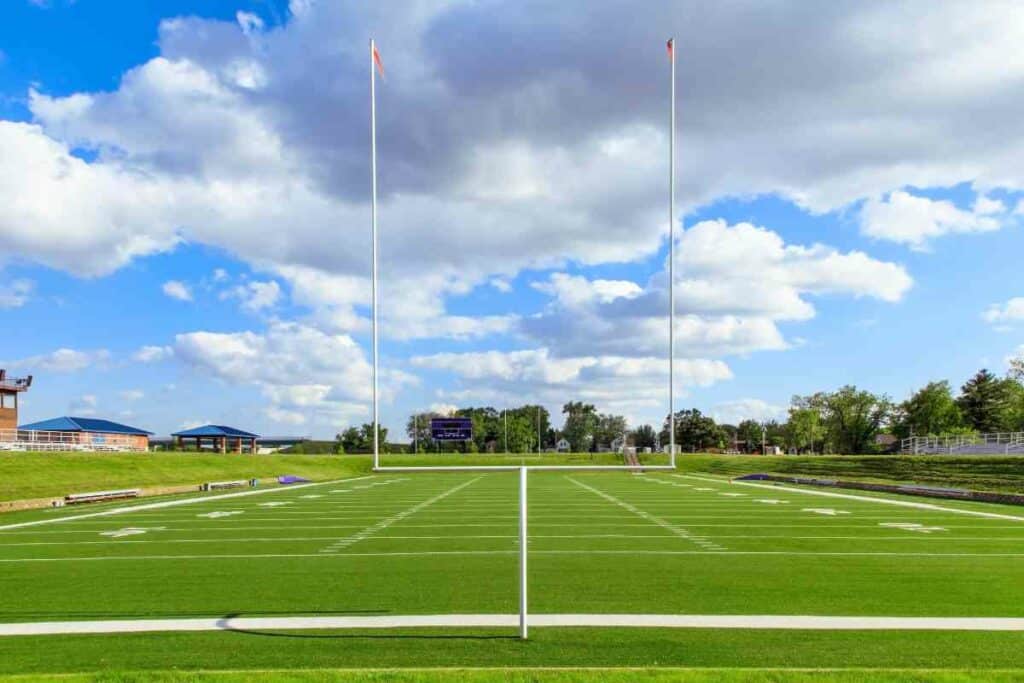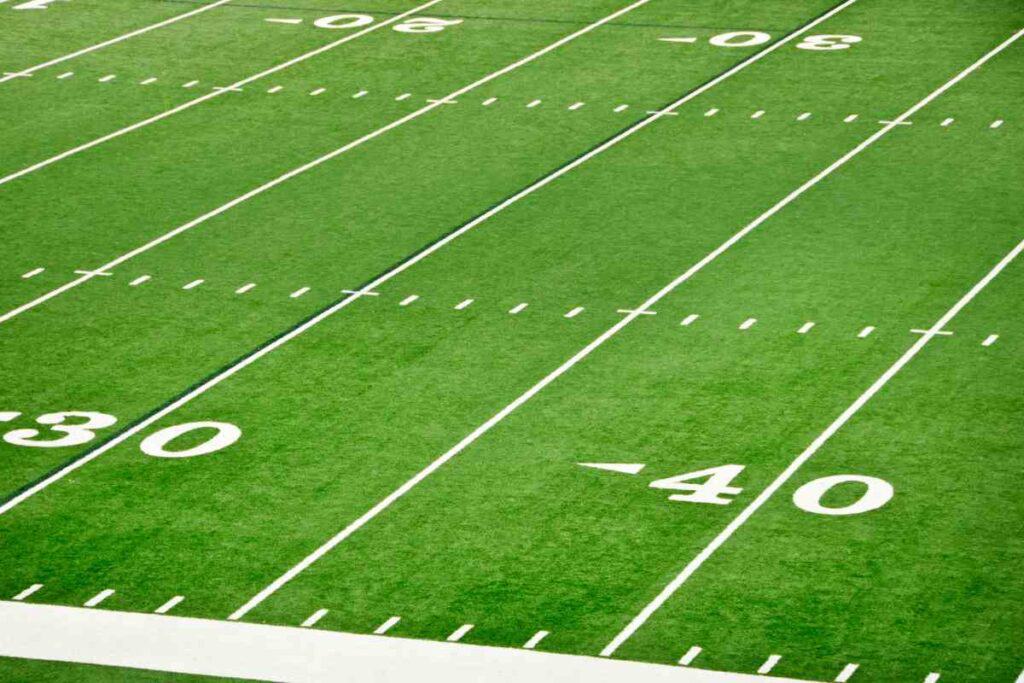Are High School Football Fields Public Property? Unraveling Access Rights
High school football fields often stand as central points for community gatherings and local team support. However, the question of their public accessibility outside school-endorsed events poses a nuanced situation.

Related Post! How Much Does It Cost To Rent A High School Football Field?
Are High School Football Fields Public Property?
High school football fields are considered part of the public school system, funded by taxpayer dollars, making them public property. However, their use is regulated by school district policies and local ordinances, often restricting access to school-related activities and events that align with the educational mission, with limited public access under specific conditions.
While these fields are typically seen as public assets, being part of taxpayer-funded educational institutions, the degree of public access and usage is governed by local school district policies and city regulations. These rules aim to balance field maintenance, security, and equitable use, ensuring the facilities serve both educational and community needs effectively.
Key Insights:
- Access to high school football fields is influenced by local regulations and school district policies.
- Public use of these fields is subject to considerations of maintenance, security, and the field’s role beyond school activities.
- Familiarity with these guidelines helps maintain a harmonious balance between student and community use.
Legal Framework and Accessibility
From my experience on and off the field, it’s evident that the legal status and public accessibility of high school football fields are primarily dictated by their affiliation with the public school system, placing them under the umbrella of public property. However, specific access rights are often delineated by school and district-level rules.
- Ownership and Control: Typically falls under school district jurisdiction.
- Accessibility Parameters: Fluctuate based on administrative decisions and mutual agreements within the community.
- Regulatory Basis: Shaped by policies at the local or district level, addressing usage rights and restrictions.
Schools commonly designate public usage times, restricting access during official school events, practices, or maintenance periods. An interesting aspect is the potential for schools to lease naming rights of facilities, introducing additional variables into accessibility considerations.
Related Post! What Size Is A High School Football Field?

Guidelines for Public Use
- Non-School Hours: Public use generally permitted.
- During School Activities: Access is restricted to ensure the focus remains on student events.
- Community Events: Possible through prior arrangement, emphasizing the field’s communal value.
- Maintenance Times: Access is denied to facilitate upkeep and ensure safety.
To avoid any misunderstandings or inadvertent rule violations, reaching out to the school administration for clarity on field use policies is advisable. This proactive approach ensures respect for both the facility’s intended educational purposes and its value as a community resource.
Related Post! High School Field Goal Post Dimensions: Standards And Regulations
Public Access and Use Policies
High school football fields are focal points for community and school spirit, yet their availability for public use varies widely, often hinging on school policies and local guidelines.
Scheduled Events and Public Accessibility:
- During School Events: Access is typically limited to students, staff, and authorized individuals to ensure focus and security for school-related activities.
- Accessibility Standards: Schools must comply with legal requirements to make facilities accessible to individuals with disabilities during events, ensuring inclusivity.
Community Use Outside School Hours:
- Varied Open Hours: Public access is commonly granted during non-school hours, such as evenings or weekends, subject to school policies.
- Field Conditions: The availability can also depend on the field’s condition, with maintenance or safety concerns potentially leading to temporary restrictions.
Rules and Restrictions:
- Established Guidelines: Schools usually set clear rules for public use, aimed at preserving the field’s integrity and ensuring safety.
- Activity Limitations: Certain actions may be prohibited to avoid damage or for safety reasons, like restrictions on golfing or the use of cleats.
Tip for Public Use: Consulting with the school administration beforehand can provide up-to-date information on accessibility and permitted activities.
Related Post! Are College Football Fields Bigger Than High School Ones?
Understanding Ownership and Maintenance:

School District Ownership:
- High school football fields are typically owned by the local school district, emphasizing their role in supporting school functions and student activities.
- Primary Purpose: Dedicated to school sports and events, with public access being a secondary consideration.
Public Funding and Field Maintenance:
- Despite school district ownership, these fields are often maintained through public funding, reflecting a partnership between the school system and the community.
- Shared Use Agreements: The involvement of taxpayer dollars can sometimes lead to arrangements that allow for community use, varying by district.
Maintenance of these facilities is crucial, not only for the athletes who compete on them but also for community members who might access the fields during permitted times. The balance between serving educational purposes and accommodating community interests underscores the need for clear communication and respect for established guidelines.
Security and Safety Measures
Ensuring safety at high school football games is paramount, given their role as major community events. Schools have increasingly implemented comprehensive security measures to create a secure environment for fans to enjoy the game without concern.
Key Security Measures in Place:
- Access Control: Critical in ensuring that only individuals with valid tickets or identification gain entry, maintaining a safe environment during the event.
- Surveillance Systems: The use of cameras serves both as a deterrent to potential disturbances and as a means of documentation should any incidents occur, offering peace of mind to attendees.
- Security Protocols:
- Bag Checks: Essential for preventing prohibited items from entering the venue.
- Metal Detectors: Aid in keeping weapons outside, ensuring a safe setting for all.
- Security Personnel: Trained professionals ready to address any issues promptly.
- Emergency Procedures: Clear plans for unexpected situations enhance overall safety.
- Restricted Parking: Controls vehicle access, mitigating vehicular threats and managing crowds more effectively.
- Visible Security Presence: The sight of security forces and police on-site is reassuring, underscoring a commitment to attendee protection.
These security strategies are crucial in allowing spectators to focus on the excitement of the game, knowing their safety is prioritized.

Exploring Legal Aspects of High School Football Fields:
The legal status of high school football fields and their accessibility to the public can be complex, as illustrated by notable legal cases and policies:
- Kennedy v. Bremerton School District: This case highlighted the balance between personal rights and public school property use, with the Supreme Court affirming a coach’s right to pray on the field. This decision emphasizes the respect for individual freedoms within school settings.
- Public School Property Usage: While high school football fields are part of government-funded educational facilities and thus considered public property, their use is typically restricted to activities that directly support the school’s educational mission. Public access for other purposes can be limited and subject to school policies.
Key Legal Takeaways:
- First Amendment Rights: The protection of speech and religious expression extends to public school properties, affirming individual liberties.
- Regulation of Access and Use: Schools have the authority to regulate field usage to ensure alignment with educational goals and proper maintenance.
- Community Access Policies: Specific guidelines may permit community use of football fields outside school activities, contingent on adherence to set conditions.
Understanding these security measures and legal frameworks enables community members to responsibly enjoy and engage with high school football fields, fostering a safe and inclusive atmosphere for all to appreciate the sport.
